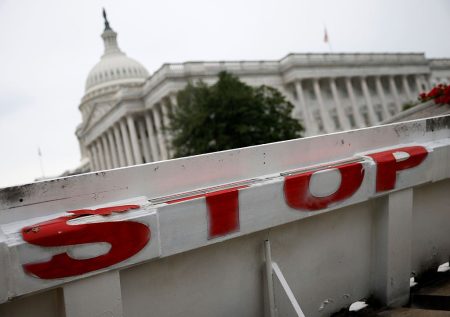Moving to a new state means updating the address on your driver’s license and, maybe lucky for you, getting a fresh attempt at taking a better headshot. Maintaining a current address on your driver’s license is not only a legal obligation but also plays a crucial role in how your insurance provider customizes your policy, calculates your rate and communicates with you. So, if you’re wondering, do I need a new ID if I move to another state and how soon? You’re in the right place. We created this guide to help you understand what you need to do to update your license and get back on the road legally in your new home state.
Do I need a new ID if I move to another state?
All states require that residents update their driver’s licenses when they move. Depending on the state, this may be required immediately, or you may be granted up to a few months’ grace period after moving. The specifics vary between states, but each has its own legal requirements regarding how long you have to update your license. To help you through the process, it’s useful to know where to go and what information and documents you’ll need to update your license.
First, let’s consider what happens when you move in-state. If you remain in the same state, you still need to update your license to show the correct address. You are likely to have some time to do this, but it’s a good idea to take care of it as quickly as possible after the move. (Note that your insurer may require you to update your car insurance immediately after any move, even one that stays in the same state).
Moving out of state can be a little trickier, since you’ll need to ensure that you have the minimum amount of car insurance required to meet the legal requirements of your new state, as well as obtain new license plates and a new driver’s license. It might, incidentally, also be a good time to shop for a new car insurance policy, since your new location might mean a lower rate.
In-state move
Some states and DMVs may allow you to update your address information online when moving within a state. However, this is not guaranteed and may not be an option. In many cases, you’ll still have to go to the DMV’s location to update your information in person. Doing so is necessary not only to keep the DMV and your license up to date, but is also critical to maintain a valid auto insurance policy. Keep in mind as well that the cost of your car insurance is influenced by home ZIP code (in most states).
Out-of-state move
Changing your driver’s license from state to state can involve more steps than an in-state move. If you’re moving to a new state, you’ll need to update your license with a DMV in the new state as soon as possible. While most states offer some grace period, which can range from a few days to a few months depending on the state, it’s beneficial to get this process started as soon as possible to allow you time to sort out any potential complications.
Can I keep my out-of-state driver’s license and car insurance?
This depends on state laws. You may wonder about this if you are a visitor or a student who is attending school in one state but lives in another. If you maintain a permanent residency elsewhere, you may be able to retain your out-of-state car insurance and license and use both legally in the state you are visiting. If, however, you are becoming a permanent resident of the state, you will need to apply for a license in your state of registration. In most states, you cannot have two active driver’s licenses at the same time. And your insurer will always require you to update your address after a permanent move since where you live is a major factor in your premium in most states.
How do I get a new driver’s license after a move?
You’ll begin the process of updating your driver’s license once your new address is secured. The exact agency or department that handles license updates will vary by state. One of the most common is the Department of Motor Vehicles (DMV), which many states use. The guide below explains how to change your driver’s license state of issuance step-by-step:
How to update your license after a move
- Identify the appropriate department and the most convenient location. The state will determine which department to use, but you can look at their individual locations to see which is closest to your new home.
- Determine the necessary documentation. Contact the department or check their website to see what information and documentation they require when updating your driver’s license. Many states have a checklist drivers can use to ensure they have all the necessary documents before arriving for their appointment.
- Make a DMV (or equivalent) appointment. You can usually schedule an appointment online or by making a call to the appropriate department. Depending on the location and time, walk-ins may also be accepted, although you’ll want to verify this beforehand. Bring everything the website or representative said you would need and aim to show up with extra time, as DMV lines can be unpredictable.
- Pay the necessary fees. After providing the necessary paperwork on-site, you may be asked to fill out some additional paperwork before paying the associated fee to update your driver’s license.
- Receive your new license. Once the paperwork and fees are taken care of, the DMV (or equivalent) will likely have you take an updated photo (unless you’re moving within state lines) for your new license. Some DMVs print your new ID on the spot. Others provide a temporary license while your official one is processed and mailed to you, which can take several weeks depending on the state.
What if my license is expired, suspended or revoked?
If your current license expired or was suspended or revoked, you may be asking yourself, what do I need to update my license? The National Driver Register tracks the status of all driver’s licenses, and your new state is likely to check this database before granting you a new license with your updated address. Here’s how each type of inactive license may affect your ability to get a new one:
- Expired: If your license has merely expired in your old state, most states allow you to apply for a new one, though you may need to take a written or driving test or fill out additional documentation, depending on how long it’s been expired.
- Suspended: If your license was temporarily suspended for unpaid fines, for example, the suspension is usually lifted once you pay. However, if it was suspended due to committing a severe traffic violation or accumulating too many demerit points, you’ll likely face a set suspension period that must be served before you can get a new license in any state.
- Revoked: If your license has been revoked, it usually means that your driving privileges have been terminated due to a serious infraction, repeat offenses or, in some cases, medical or legal issues. Most states won’t issue you a new license until you complete a state-specific reinstatement process, which may involve legal steps like court approval or reapplying as a new driver.
In general, if you are in this situation, you should contact the DMV in your new location to find out the steps needed to clear up your issues. You will likely need to present documentation that verifies your status before any steps are taken.
How do I find my DMV?
Depending on the license type you need and the state issuing it, you may be looking for a DMV, Department of Public Safety, Department of Transportation or a similar department. Below is a table highlighting which department you can expect to look for in each state and how long that state’s grace period is:
What should I expect if I’m getting a new license?
Although the process and experience can differ between states, there are some commonalities you can expect when updating your driver’s license in any state. The list below is not exhaustive, but serves as a helpful baseline for what you can reasonably anticipate:
- Wait times: DMVs are often busy, and even when they aren’t, you may end up waiting on the staff to process documents and file paperwork. Sometimes, you may have to wait for your new license instead of receiving it immediately.
- Tests: Depending on the situation, you may have to take tests to prove your eligibility. These can range from a basic vision test to full-on written and driving tests. Test requirements may be more likely if your current license is expired.
- Fees: No matter the state, you must pay a fee for your new license.
- Paperwork: Some basic paperwork is usually required when obtaining a new or updated license.
- Headshot photo: Your new license will usually require a new photo that is taken on-site. If you moved within the same state, you’ll likely be able to keep your existing license photo.
Do I need to update my car insurance when I move?
As we mentioned earlier, even if you’re only moving a few streets away from your current residence, it is important to let your insurer know about your new address. Why? Your location plays a key role in determining coverage requirements, premiums and even how your insurer communicates with you.
Insurance requirements
If you move from one state to another, it’s even more important to let your insurer know about your move because every state has its own minimum requirements for coverage. Insurance companies cannot legally sell you a policy that doesn’t meet state requirements but need to know where you’re living to do so.
If your insurer is a regional carrier that doesn’t sell policies in your new state, you might also need to shop for new insurance when you move. You should start this process well before you move so there is no gap in your coverage. It’s easy to get quotes online from most major insurers, and you may even be able to purchase your policy digitally via a website or app.
Rate calculation
In almost every state (California limits this, as does Michigan to some extent), your ZIP code plays a role in determining your rate. Insurers decide how much to charge you by assessing how likely it is that you will file a claim. So, for example, if you move from an area that sees heavy traffic — and the accidents and insurance claims that result from it — to an area where there are fewer congested roads and lighter traffic, you might see your rate decrease. Conversely, if you move to an area that has a high crime rate, your premium could go up.
Frequently asked questions
Read the full article here









